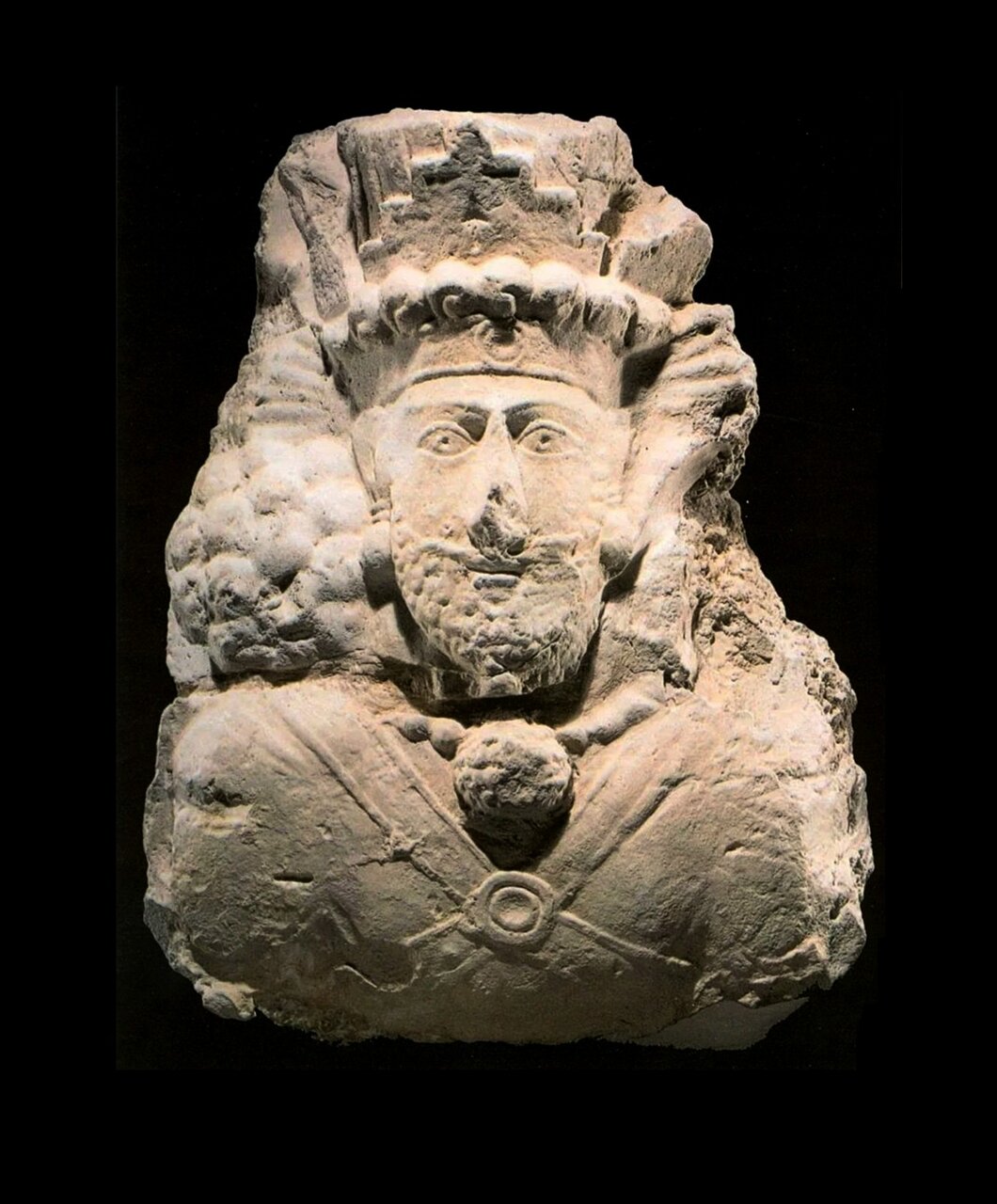Echoes of the past: Plaster Bust of Shapur II

This 50 cm plaster bust depicts Shapur II of the Sassanian dynasty. It was recovered during excavations at the Hajjiabad manor complex near Darab, in Fars province, southern Iran."
The site—accidentally discovered in 1977 but significantly damaged by local farmers using bulldozers—was investigated by the late Massoud Azarnoush in 1978, with follow-up campaigns in 1998 and 1999.
Azarnoush identified the complex as a Sasanian-era manor house contemporary with Shapur II’s reign (307–379 CE). Its unique layout comprises distinct sections: ceremonial spaces, religious quarters, living areas, guest accommodations, and unidentified divisions. While characteristic Sasanian elements (ayvans, courtyards, domes) are present, the spatial organization differs fundamentally from other known period monuments.
The abundant stucco decoration (both figural and geometric) and painted murals provide critical evidence for Sasanian dating: Murals concentrate in the ceremonial section, Stucco work (exclusively figural/geometric) appears only in the religious area, Figural stucco includes statues/busts of clothed/nude male/female figures and animals, Nude female figures are interpreted as representations of Anahita, suggesting the owner’s devotion to her cult, Multiple stucco busts depict a royal personage, proposed by Azarnoush to be the building’s owner.
Among these, one distinctive bust is convincingly identified as Shapur II—providing the primary basis for dating the site. This fragmentary yet masterfully crafted bust (likely wall-mounted) exemplifies mid-Sasanian sculptural innovation, enabling facial recognition beyond coins and reliefs. The ceremonial and religious zones demonstrate exceptional decorative investment, confirming their status as architectural focal points. Shapur II (309–379 CE), known as Shapur the Great, the tenth Sasanian Shahanshah whose 70-year reign marks the longest in Iranian history. His rule catalyzed a military resurgence and territorial expansion, initiating the first Sasanian golden age and cementing his legacy among the empire’s most illustrious monarchs.
Registered as National Heritage No. 25 in 2015, the bust remains an icon of Sasanian royal portraiture despite the site’s initial disturbance.
AM
Leave a Comment